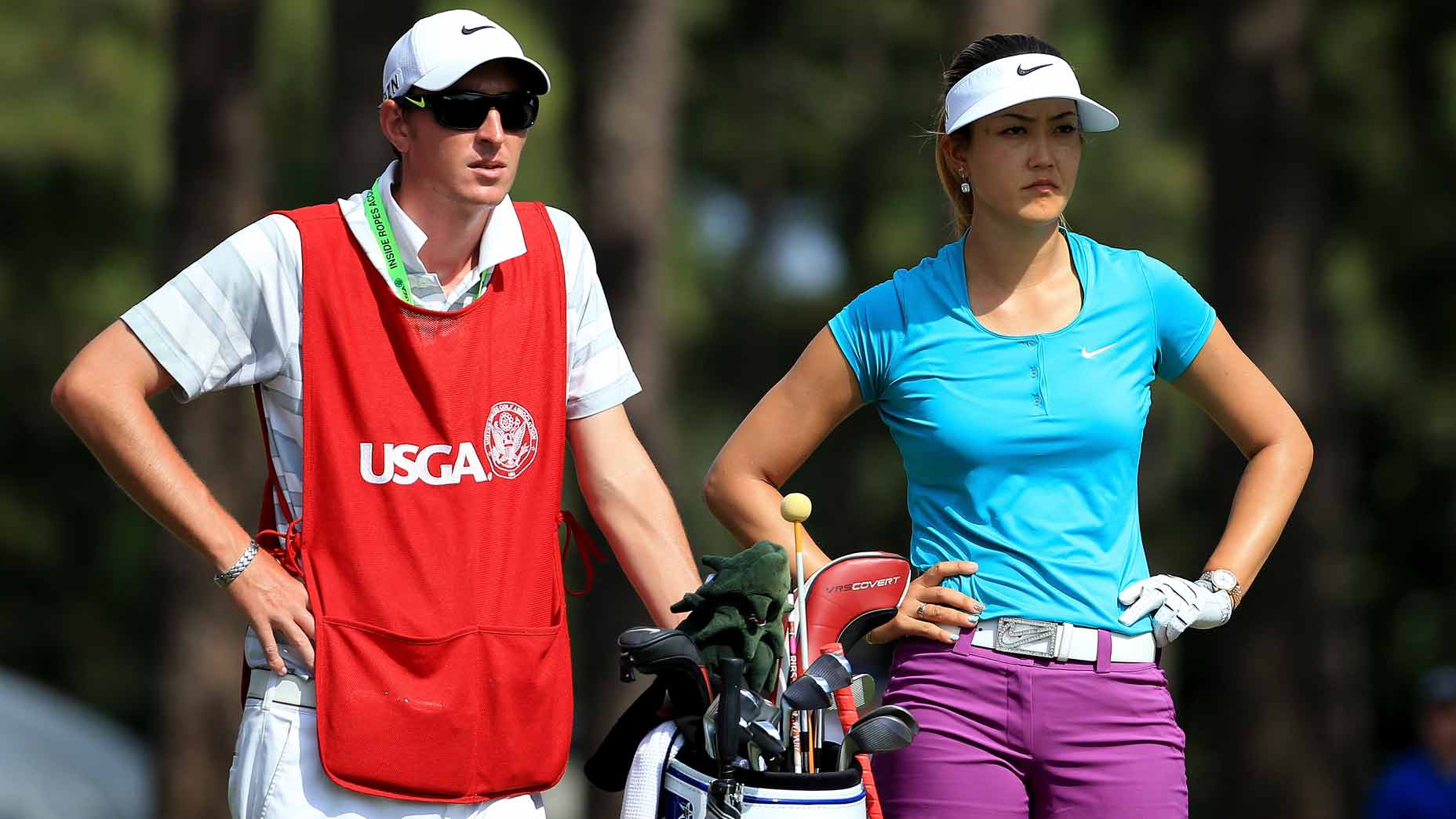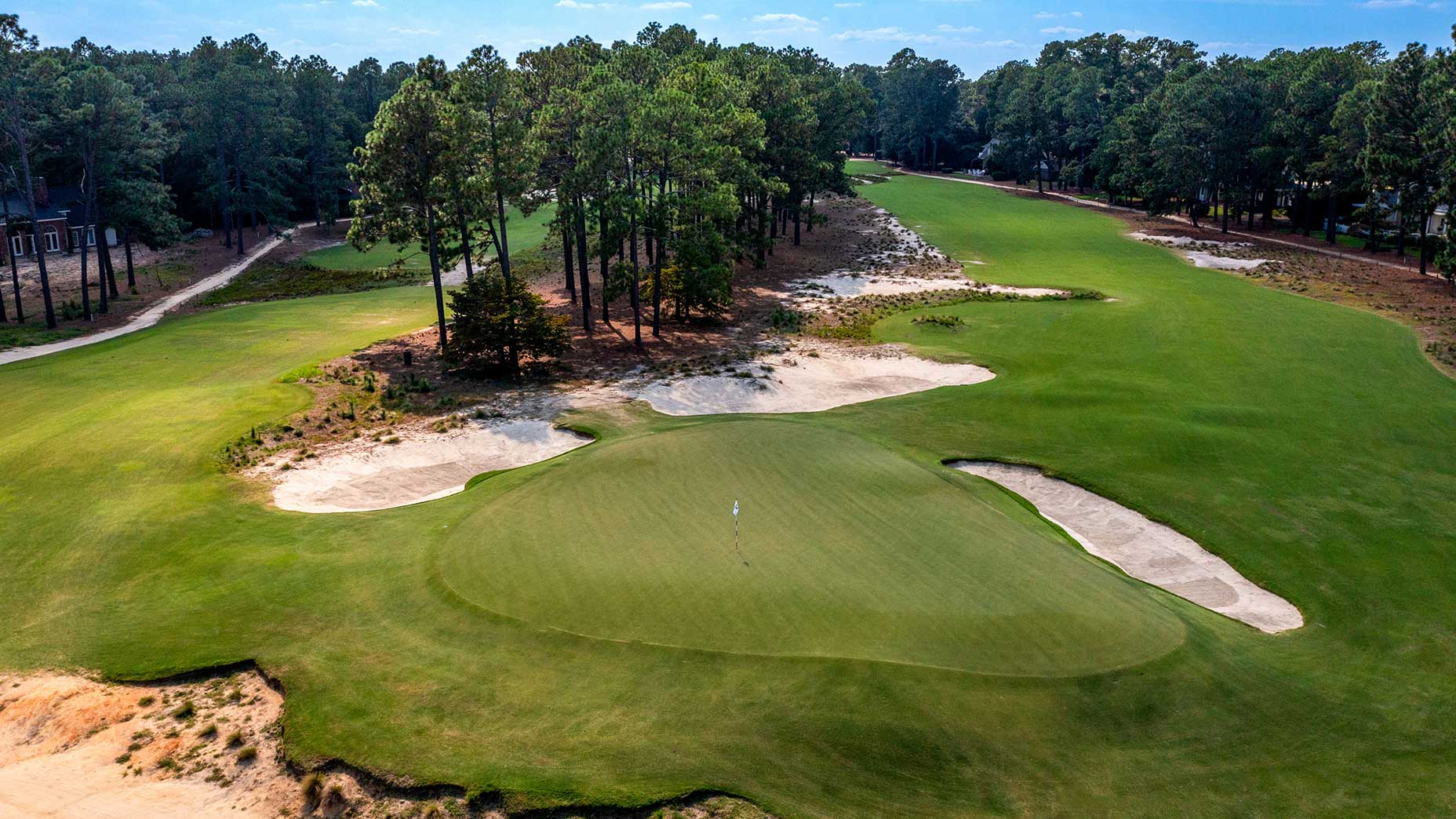Pinehurst No. 2’s 16th hole is a long, daunting, and extremely challenging par-4 that measures a whopping 536 yards — so it’d surely have an average golfer like you or me shaking in our golf shoes just standing on the tee box.
But that’s just one of the reasons why we’re not playing in this week’s U.S. Open; this type of test is better left to the real professionals.
Peter Kostis, Gary McCord explain the ‘genius’ of Pinehurst No. 2By: Jack Hirsh
So what makes No. 16 so difficult? What’s the secret to avoid disaster there? And are there any tips that the U.S. Open field should use to actually score low on it? Two expert commentators, Peter Kostis and Gary McCord, offer up their analysis.
Check out what the two have to say about Pinehurst No. 2’s 16th hole in the video above, which comes courtesy of their podcast, “Kostis & McCord: Off Their Rockers”, a GOLF Production.
How to navigate the 16th hole at Pinehurst No. 2
As the two stand on the green of the 16th hole at Pinehurst No. 2, they can’t help but laugh at just how difficult this hole appears — with Kostis providing some context by reminding viewers that it’s one of the longest par-4s in U.S. Open history.
But more than just the length of No. 16 is everything else on the hole, like a narrow fairway that requires precision and the hazards up and down both sides of said fairway.
That’s why Kostis says that No. 16 will test the will of the U.S. Open field, making sure they make the right decision on this hole.
What’s the key to winning at Pinehurst? Former champ explainsBy: Zephyr Melton
“The first sign of pressure is poor decision-making, and the second sign is poor execution,” he tells McCord. “This [hole] epitomizes decision-making at Pinehurst and what the players are going to be facing.”
What about the hole’s length? Even if a player pipes his drive between 300-320 yards, they still have tons of yardage left to even get to the green — and if he leaves that second shot short, disaster can occur.
“If you hit it 320 yards off the tee, you’ve still got more than 200 yards left, Kostis says. “And if you don’t get it up there far enough [on your approach shot], watch what happens.”
The video cuts to Kostis throwing a ball onto the green, verbally trying to will it to hold the putting surface, but instead watching it trickle down and down and down back towards him.
This type of result is something the McCord says can pop into a player’s mind prior to hitting their approach shot, and then describes what he’s thinking about as a player in that position.
“The first thing I’m looking at if I’m back there 200 yards is that I can’t get this ball over the green,” McCord adds. “If I do, the slightest miss on a chip [on my next shot] is going to end up [back off the front of the green for a chip back up].”
As the two discuss the level of difficulty and the speed of the greens, Kostis then walks towards the back of the green to show how intimidating a shot it is for any player who hits their approach beyond the pin.
“Is this a putt to make it, or are you just [playing] defense,” McCord asks Kostis.
“I’m going to try and make it,” Kostis replies.
What exactly makes the greens at Pinehurst No. 2 so menacing?By: GOLF’s Course Ratings Panel
After Kostis hits the putt and watches it quickly roll across the green and down the front slope, he explains how nearly every player will find themselves in that position regardless of how they approach No. 16.
“Here’s the deal, you can be down there in two shots or you can be down there in three shots,” he says. “But sooner or later, you’re going to be down there.”
Finally, McCord dives deeper into what makes Pinehurst No. 2 such a difficult course, saying it’s the igloo-like greens that can really wreck scores.
“The whole characteristic of Pinehurst No. 2 is that all of these greens are basically igloos with a pin right on the top,” he says. “If you go off on the sides, or go off on the front, or you roll off of the back, and it’s very difficult to get the ball close while pitching.”
You can listen to the entire episode from Kostis & McCord below.












